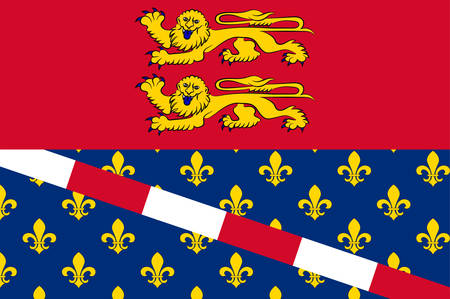Introduction: The British Love Affair with Paint
Britain’s passion for paint is woven into the very fabric of its homes, high streets, and historic landmarks. From stately country manors to cosy Victorian terraces, the UK’s architectural heritage has fostered a deep appreciation for both quality and character in decorating. This long-standing tradition of personalising spaces has given rise to some of the world’s most respected paint brands, each offering its own take on the quintessential British palette. Here, colour is more than just a backdrop—it tells stories of eras gone by and reflects the subtle nuances of British life, from misty countryside mornings to bustling city afternoons. The nation’s enthusiasm for redecorating and restoring period properties has ensured that classic paint makers not only endure but also set the trends that ripple through homes across Britain. With a keen eye for understated elegance and historical authenticity, Britons have shaped—and continue to shape—the evolution of national colour preferences through their enduring love affair with paint.
Heritage Brands: Icons of British Craft and Colour
When it comes to paint in the UK, certain names are woven into the very fabric of British homes. These heritage brands not only represent decades—sometimes centuries—of craftsmanship, but have also shaped national tastes in colour and design. Let’s take a closer look at three of the most iconic British paint brands: Farrow & Ball, Little Greene, and Dulux.
Farrow & Ball: The Artisan’s Choice
Founded in Dorset in 1946, Farrow & Ball is synonymous with rich pigments and timeless elegance. The brand is celebrated for its traditional manufacturing methods and commitment to eco-friendly formulas. Their carefully curated palette draws inspiration from historic British architecture and countryside landscapes, making it a go-to for period property renovations and modern homes alike.
Little Greene: Historic Roots with Modern Appeal
Tracing its roots back to 1773 in Manchester, Little Greene holds a Royal Warrant and prides itself on producing environmentally responsible paints. This brand stands out for its collaboration with English Heritage, which results in authentic colour collections based on historical research. Little Greene’s paints are known for their depth and sophistication, often seen gracing Georgian townhouses as well as contemporary interiors.
Dulux: A Staple in Every British Home
Dulux is perhaps the most recognisable name in British paint, found everywhere from high street shops to DIY sheds across the nation. Founded in 1931, Dulux revolutionised home decorating by making durable, easy-to-use paints accessible to all. Its broad range of colours and finishes caters to every taste and budget, ensuring its place as a household staple.
Key Characteristics of Classic British Paint Brands
| Brand | Founded | Signature Qualities | Famous For |
|---|---|---|---|
| Farrow & Ball | 1946 | Rich pigments, eco-friendly formulas, historical palettes | Heritage-inspired shades; luxury appeal |
| Little Greene | 1773 | Sustainable production, historic collaborations, deep colours | Authentic period colours; English Heritage partnership |
| Dulux | 1931 | Wide accessibility, variety of finishes, durability | Mainstream popularity; innovative colour trends |
The Influence on British Homes and Colour Trends
The enduring appeal of these classic brands lies in their ability to blend tradition with innovation. Whether restoring a Victorian terrace or refreshing a suburban semi-detached house, Britons turn to these trusted names for both inspiration and quality. Their influence can be seen in everything from the resurgence of muted heritage tones to bold feature walls that reflect personal style yet feel distinctly “British”. Each brand continues to shape how homes across the UK express character through colour.

3. The British Palette: Colours Reflecting Culture and Climate
When we think about the colours that define British interiors, it’s impossible to ignore how deeply they are shaped by both the natural environment and centuries of architectural heritage. Classic British paint brands have long embraced a palette that mirrors the unique blend of soft light, frequent rain, and lush greenery that characterises much of the UK. Muted tones—think gentle greys, sage greens, dusty blues, and warm taupes—have become staples in homes across the country, chosen not just for their aesthetic appeal but also for their ability to create a sense of calm and comfort against often overcast skies.
Earthy shades are particularly popular, reflecting the rolling hills, stone cottages, and historic brickwork seen throughout the British countryside. These tones offer a timeless quality, connecting the indoors with the world outside and lending rooms an understated elegance. Brands such as Farrow & Ball and Little Greene are renowned for their subtle yet sophisticated hues, which draw inspiration from everything from Georgian townhouses to wild coastal landscapes.
However, there is also a tradition of punctuating these serene backdrops with occasional bursts of vibrant colour—a sunny mustard in a hallway or a deep navy accent wall in a lounge—adding warmth and personality without overwhelming the space. This careful balance between restraint and expression is something classic British paint brands have mastered, helping homeowners express individuality while respecting the broader national aesthetic shaped by climate and culture.
4. Influence on National Colour Trends
When it comes to home styling, British paint brands have done more than just supply the nation with colour—they’ve set the mood for interiors across generations. From the signature hues on a Georgian terrace to the subtle elegance found in modern flats, leading paint manufacturers have quietly shaped Britain’s collective taste and daily living environments.
How Paint Brands Set Trends in British Homes
The influence of classic brands like Farrow & Ball, Dulux, and Little Greene is visible from high street shopfronts right down to the heart of British kitchens. These companies have long collaborated with designers and heritage organisations, ensuring that their palettes stay both timeless and trend-forward. Their carefully curated collections often spark nationwide trends, such as the resurgence of muted greens or the embrace of bold navy blues in urban spaces.
Popular Colour Choices by Room
| Room Type | Classic Brand Favourite | Current Trend |
|---|---|---|
| Kitchen | Dulux Heritage White Cotton | Sage Green, Deep Blues |
| Living Room | Farrow & Ball Elephants Breath | Earthy Neutrals, Warm Greys |
| Bedroom | Little Greene Celestial Blue | Pale Pinks, Soothing Blues |
| Exterior (Terraces) | Crown Classic Cream | Pewter Grey, Olive Green |
The British Approach to Colour at Home
Unlike fleeting trends elsewhere, Brits tend to favour colours that evoke comfort, history, and a sense of place. Paint brands tap into this by revisiting archival shades—think deep oxblood reds reminiscent of Victorian parlours or soft duck egg blues that nod to rural cottages. At the same time, their seasonal launches encourage a gentle evolution in tastes: a new “heritage green” might soon become the must-have for front doors across London.
From Georgian Terraces to Modern Flats: Lasting Influence
The impact of these paint brands extends beyond colour alone; it’s about how people feel in their homes. Whether restoring period properties or adding character to new builds, classic British paints help create spaces that are practical yet deeply personal—a reflection of national identity through thoughtful design choices.
5. Innovation Meets Tradition: Sustainability and Modern Living
One of the most fascinating aspects of classic British paint brands is their ability to elegantly bridge the gap between time-honoured heritage and the ever-evolving demands of modern living. As more UK homeowners embrace sustainable lifestyles and seek interiors that reflect both comfort and conscience, established brands such as Farrow & Ball, Little Greene, and Dulux Heritage have taken up the challenge to innovate without compromising their traditional values.
Eco-Friendly Formulas for a Greener Home
Responding to increased environmental awareness across Britain, these iconic brands have reformulated many of their paints to minimise VOC emissions and use responsibly sourced ingredients. Water-based finishes now dominate their product ranges, offering customers safer options for families and pets while maintaining the depth of colour and finish that classic British interiors are known for. The introduction of recyclable packaging and clear eco-labels further reinforces their commitment to sustainability—a value that resonates deeply with today’s mindful consumers from Edinburgh to Cornwall.
Effortless Application for Busy Lifestyles
Recognising that modern life often leaves little time for laborious DIY projects, classic British paint manufacturers have invested in easy-use finishes designed to simplify redecorating. Quick-drying formulas, washable matt emulsions, and stain-resistant technologies mean that even period homes can be refreshed with minimal disruption. These practical innovations ensure that traditional elegance doesn’t come at the expense of convenience—an important consideration for busy London flats or bustling family homes in Manchester alike.
Blending Heritage Colours with Contemporary Tastes
While honouring historic colour palettes inspired by Georgian townhouses or Victorian terraces, British paint brands have also embraced a spirit of experimentation. By collaborating with interior designers and trend forecasters, they introduce seasonal collections that pair classic shades with bold contemporary hues—think deep navy accent walls next to soft heritage greys or playful pops of botanical green. This blend enables British homes to feel both rooted in tradition and effortlessly up-to-date, reflecting the nation’s unique approach to style: respectful of the past yet always open to reinvention.
6. Everyday Spaces: Practical Tips for Achieving That British Look
Bringing a classic British feel into your home doesn’t require a stately manor—just a few clever paint choices and some thoughtful organisation. Here’s how you can harness the influence of Britain’s iconic paint brands to craft interiors that are both timeless and practical.
Highlight Period Features with Colour
Emphasise original skirting boards, cornices, or picture rails by painting them in contrasting shades from classic British palettes. Farrow & Ball’s muted greys or Little Greene’s deep blues make period details stand out while adding depth to your rooms. This simple step transforms everyday spaces into elegant nooks brimming with character.
Maximise Natural Light the British Way
Use lighter heritage shades such as soft creams, gentle sages, or pale blues—staples in British homes—to reflect natural light and create an airy atmosphere. Paint ceilings just a hint lighter than walls using a trusted brand like Dulux Heritage; this subtle transition opens up smaller spaces while maintaining that quintessentially calm British look.
Organise with Classic Colour Zoning
Divide open-plan areas with blocks of complementary colours. For example, designate a reading corner in deep olive green and keep communal areas in warm neutrals. This not only helps organise your space but also pays homage to the harmonious palettes seen in traditional British interiors.
Simple Touches, Lasting Charm
Add a pop of personality by painting doors or built-in shelves in bold heritage tones such as burgundy or navy. Not only does this update tired furniture, but it also infuses each room with that unmistakable sense of British charm—practical, stylish, and steeped in tradition.
With these easy-to-follow tips inspired by classic British paint brands, your home can embody both order and elegance—the true heart of British interior style.


